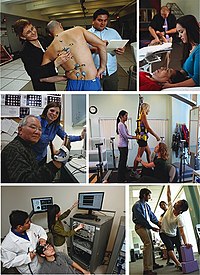
Photo from wikipedia
Compared to the tremendous volume of studies focusing on children and teenagers without disabilities, research regarding weight and body composition among young populations with an intellectual disability is relatively rare.… Click to show full abstract
Compared to the tremendous volume of studies focusing on children and teenagers without disabilities, research regarding weight and body composition among young populations with an intellectual disability is relatively rare. Their number further decreases when we refer to specific age groups with intellectual deficits, such as children and adolescents younger than 18. In addition, studies are even scarcer when we wish to compare groups of subjects with different degrees of intellectual disability by gender. This study has a constative nature. The research sample comprises 212 subjects—girls and boys with an average age of 17.7 ± 0.2, divided into six groups by gender and type of intellectual disability. The parameters considered within the study include anthropometrical data and body composition determined using a professional device (Tanita MC 580 S). The findings of this study highlight the impact of intellectual disability on body composition in this age category. We hope it will help develop efficient strategies, recommendations, and intervention plans to ensure active participation in physical activities and categorisation within the optimal parameters of body composition indicators.
Journal Title: International Journal of Environmental Research and Public Health
Year Published: 2023
Link to full text (if available)
Share on Social Media: Sign Up to like & get
recommendations!